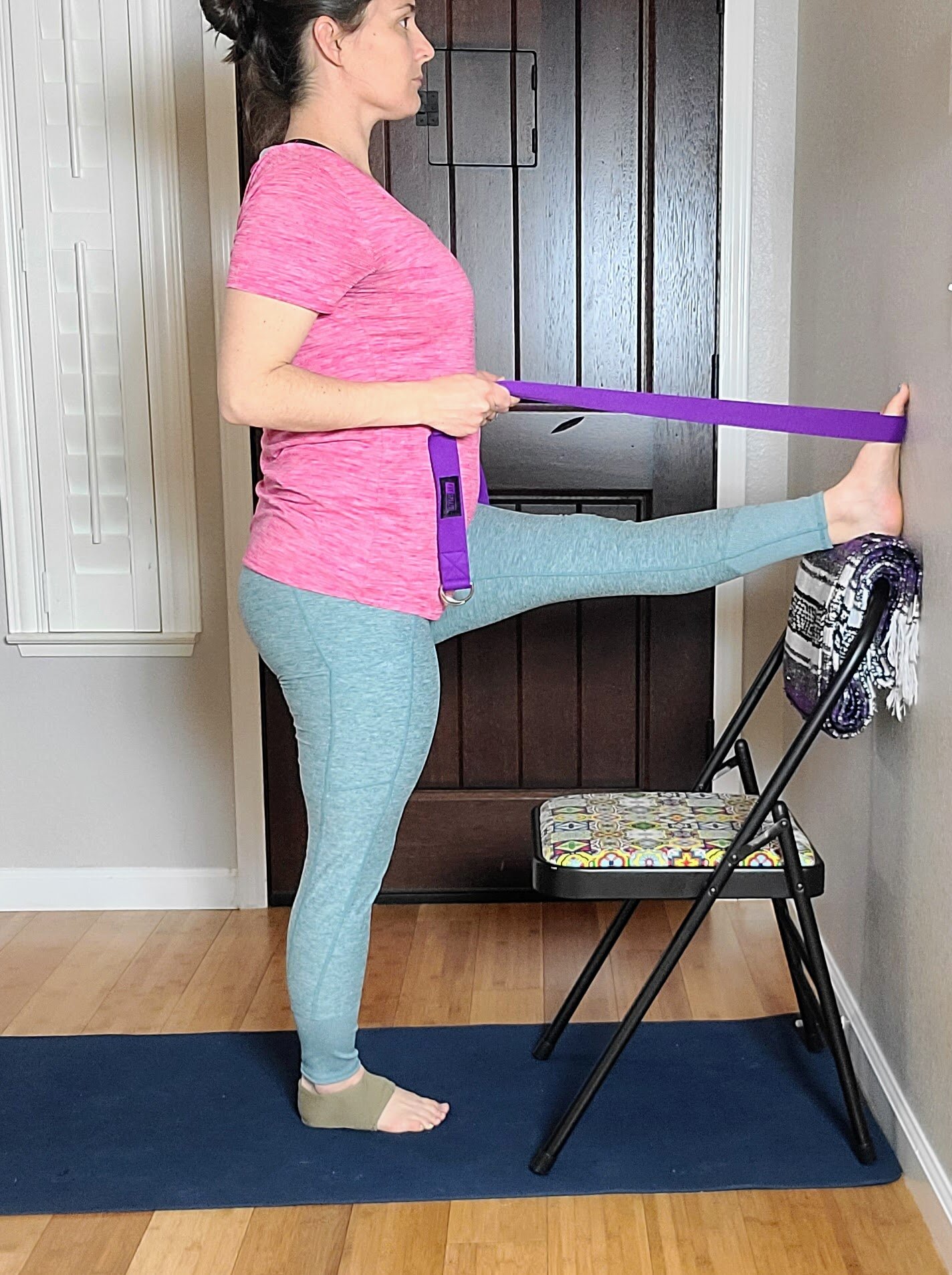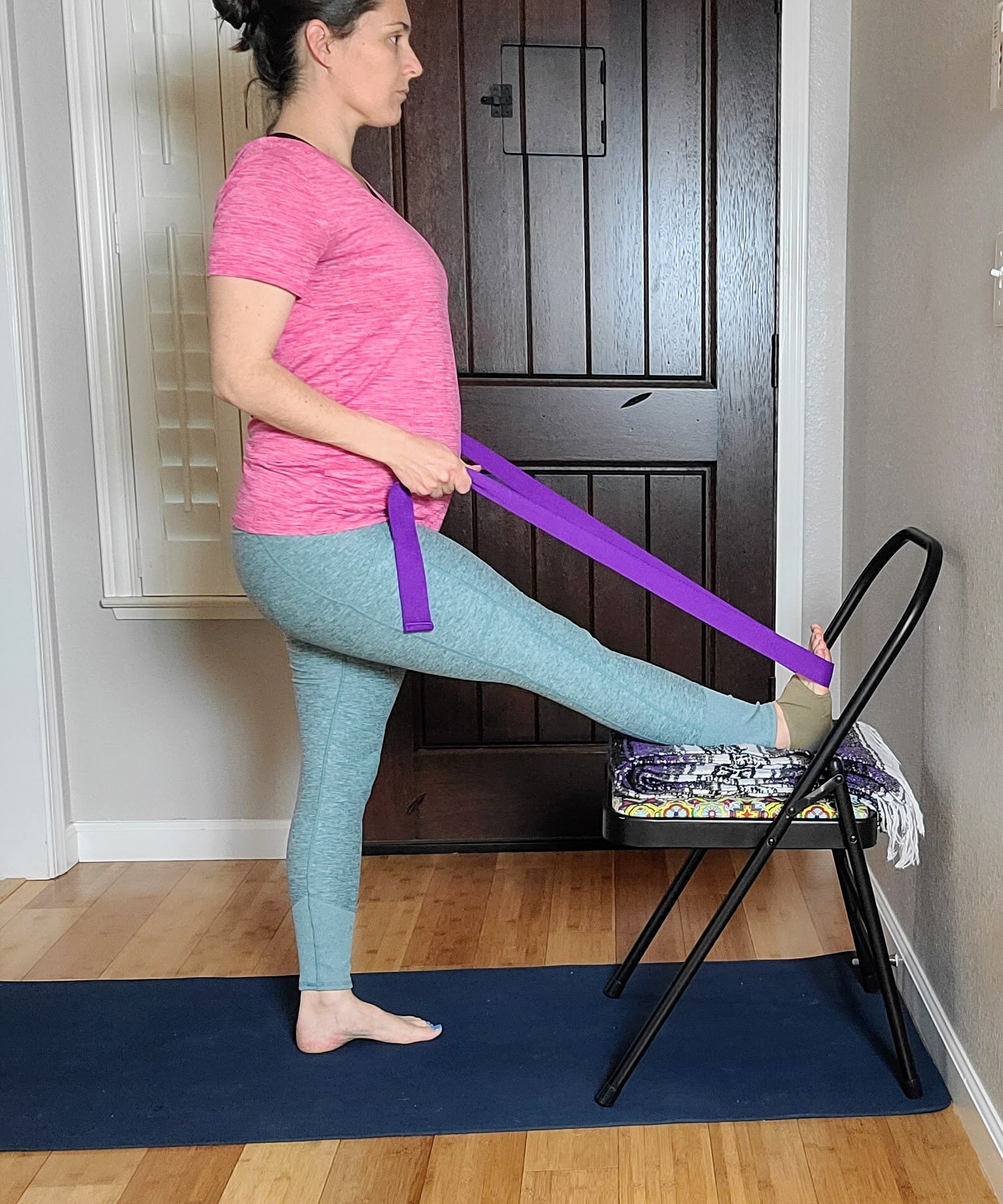Yoga Poses for Leg Length Discrepancy: Extended Hand-to-Big-Toe Pose
/Standing yoga poses can present challenges for people with leg length discrepancies. If your legs are uneven in length, standing can be uncomfortable, your hips can be misaligned, and your legs can have differences in strength or flexibility.
Such challenges, however, are exactly the reasons you need to work on standing poses. They may be uncomfortable, but trying to find more balance between your two legs can ultimately help reduce pain and asymmetry.
One good standing pose for leg length discrepancies is Extended Hand-to-Big-Toe Pose (Utthita Hasta Padangusthasana). Like others I often recommend, this is an asymmetric standing pose that will strengthen the ankles and legs and stretch the hamstrings. The supine (laying on your back) version is also very helpful for scoliosis and strengthening and lengthening the legs, but the standing version requires more balance and work to stabilize the hips. This pose is also good during pregnancy.
While this version uses a chair and a wall to support your raised leg, you can do the pose without one, or by using other furniture to rest your foot on. I also use a yoga strap, but a belt or thin towel can also work.
How to Do It
1. Place a chair with a back about as high as your hips against a wall. Cover the top of the chair with a towel or blanket. Standing in front of the chair in Mountain Pose, bend your right knee and raise your right foot to the wall above the chair. If this is too high and stretches your hamstring too much, try resting your right foot on the seat of the chair or on a block or stack of books on top of the chair.
2. Loop the yoga strap around the ball of your right foot and pull the sides of the strap to provide some traction for the raised leg and allow your spine to lengthen. You do not want to hunch forward trying to reach your toes, but keep your torso long.
3. Press down into the standing leg, so you don’t sink into the standing hip. Stabilize the hips by bringing the right thigh and femur back in toward the hips, trying to level the tops of the hips, and squeezing the hips in toward the midline. This will take balance and core strength.
4. Take 5 to 10 breaths on this side before lowering the raised leg, resetting in Mountain Pose, and switching sides.
Notes for the longer leg:
The longer leg is generally the weaker leg. Think about pressing down into that leg more to strengthen it using the resistance of the ground and wall.
Notes for the shorter leg:
The shorter leg hip will be lower and tend to drop both when it is standing and raised. Focus on pulling that hip up to be level with the higher hip. You will likely need to be a little closer to the wall when you raise your shorter leg. Otherwise, your shorter hip will have to roll forward to compensate.
Other things to watch for:
Notice the location of the feet while standing and against the wall. One might turn out more or not go as high. The toes should be facing forward when standing and pointed up when raised. The actions of the feet can be indicative of the position of and asymmetries in the legs and hips.
Other posts in the Yoga Poses for Leg Length Discrepancy Series:
Triangle Pose (Trikonasana)
Tree Pose (Vrksasana)
Side Plank Pose (Vasisthasana)
Wide-Legged Forward Fold (Prasarita Padottanasana)
And sign up to get my Best Yoga Pose for Leg Length Discrepancies guide



